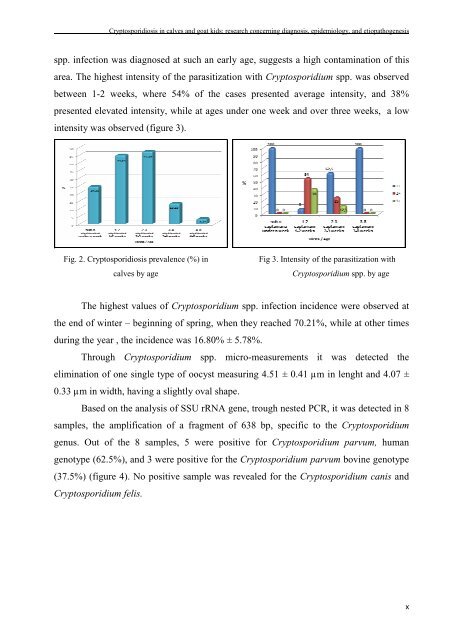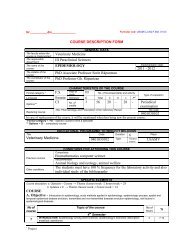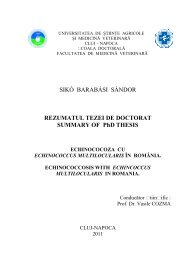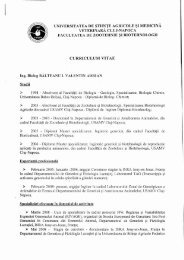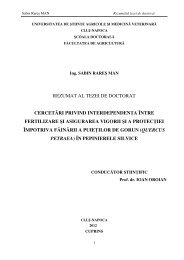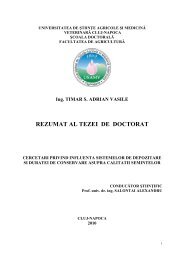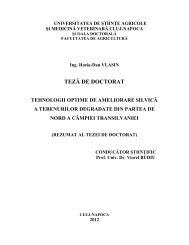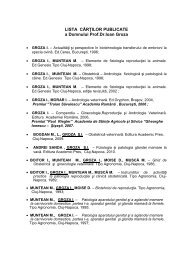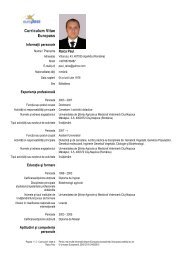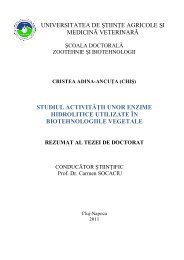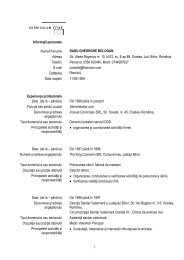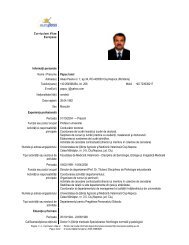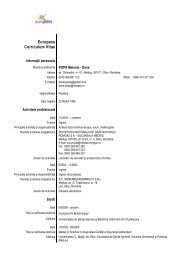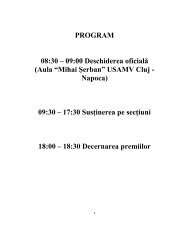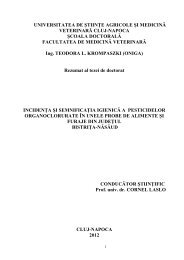rezumat final - USAMV Cluj-Napoca
rezumat final - USAMV Cluj-Napoca
rezumat final - USAMV Cluj-Napoca
Create successful ePaper yourself
Turn your PDF publications into a flip-book with our unique Google optimized e-Paper software.
Cryptosporidiosis in calves and goat kids: research concerning diagnosis, epidemiology, and etiopathogenesis<br />
spp. infection was diagnosed at such an early age, suggests a high contamination of this<br />
area. The highest intensity of the parasitization with Cryptosporidium spp. was observed<br />
between 1-2 weeks, where 54% of the cases presented average intensity, and 38%<br />
presented elevated intensity, while at ages under one week and over three weeks, a low<br />
intensity was observed (figure 3).<br />
Fig. 2. Cryptosporidiosis prevalence (%) in<br />
calves by age<br />
Fig 3. Intensity of the parasitization with<br />
Cryptosporidium spp. by age<br />
The highest values of Cryptosporidium spp. infection incidence were observed at<br />
the end of winter – beginning of spring, when they reached 70.21%, while at other times<br />
during the year , the incidence was 16.80% ± 5.78%.<br />
Through Cryptosporidium spp. micro-measurements it was detected the<br />
elimination of one single type of oocyst measuring 4.51 ± 0.41 µm in lenght and 4.07 ±<br />
0.33 µm in width, having a slightly oval shape.<br />
Based on the analysis of SSU rRNA gene, trough nested PCR, it was detected in 8<br />
samples, the amplification of a fragment of 638 bp, specific to the Cryptosporidium<br />
genus. Out of the 8 samples, 5 were positive for Cryptosporidium parvum, human<br />
genotype (62.5%), and 3 were positive for the Cryptosporidium parvum bovine genotype<br />
(37.5%) (figure 4). No positive sample was revealed for the Cryptosporidium canis and<br />
Cryptosporidium felis.<br />
x


